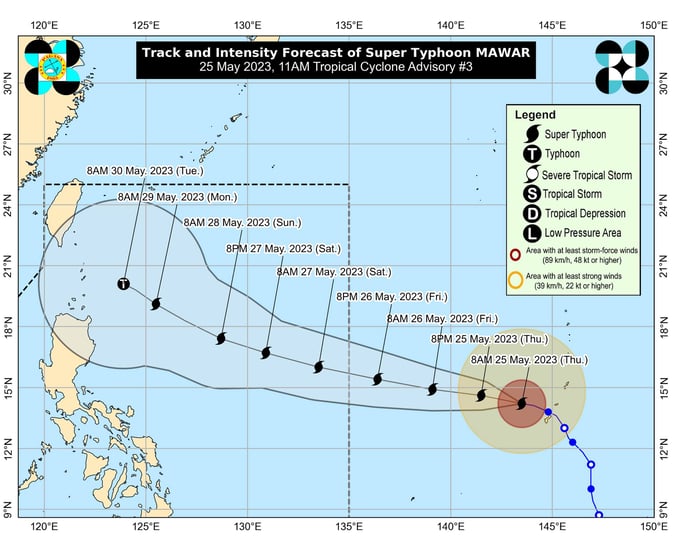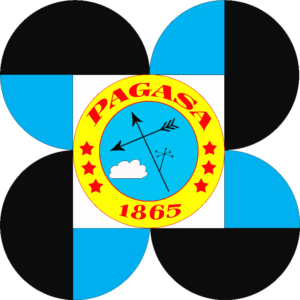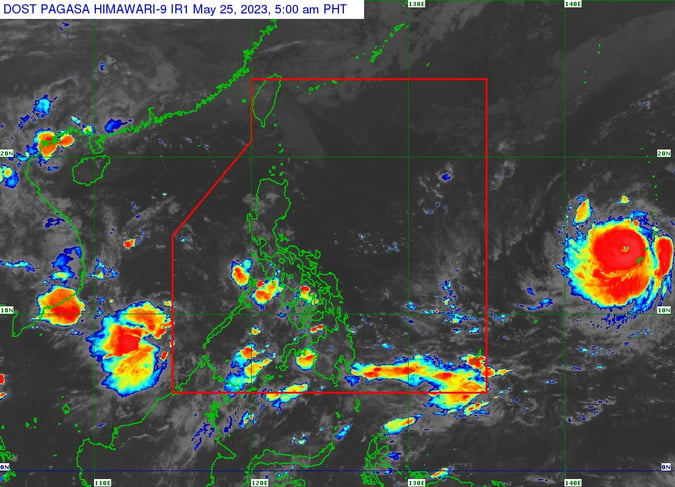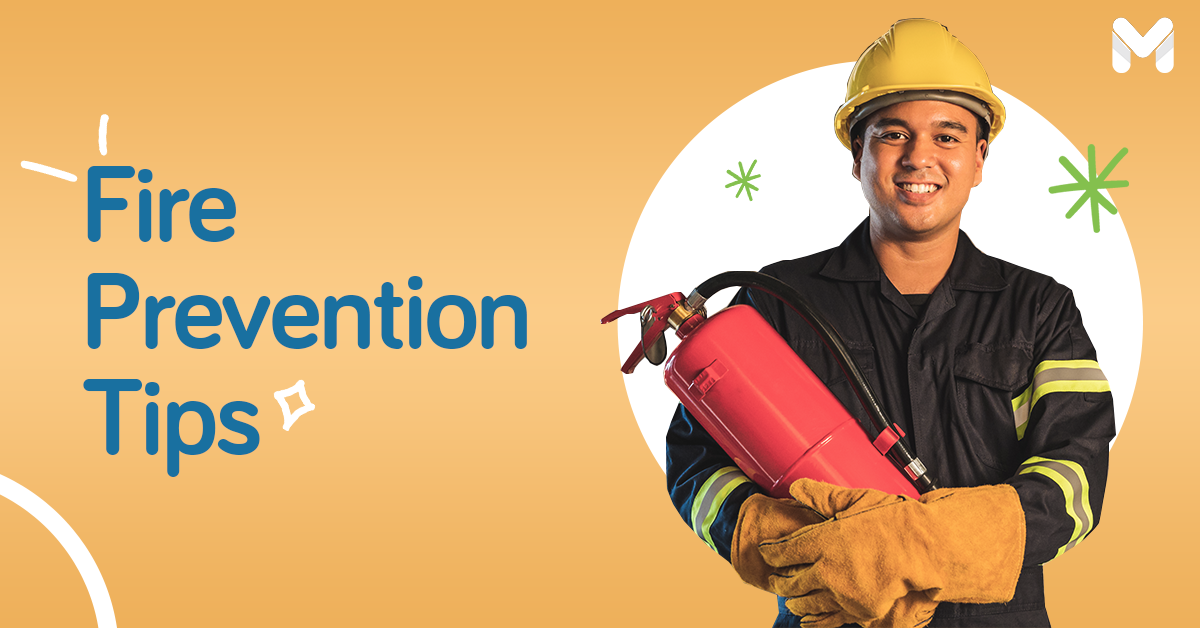Every typhoon season, Filipinos glue themselves in front of their TV and scour social media for updates on the suspension of classes. We also monitor the news for weather and flooding updates in our area whenever a storm batters the country.
But have you ever wondered how typhoons in the Philippines are named? How does the Philippine Atmospheric Geophysical and Astronomical Services Administration (PAGASA) come up with typhoon names in the Philippines like Betty, Jolina, and Inday?
Naming storms may sound trivial, but there's more to Philippine typhoon names than meets the eye.
List of Typhoon Names in the Philippines for 2023
⛈️ 2023 Philippine Typhoon Names
- Amang
- Betty
- Chedeng
- Dodong
- Egay
- Falcon
- Goring
- Hanna
- Ineng
- Jenny
- Kabayan
- Liwayway
- Marilyn
- Nimfa
- Onyok
- Perla
- Quiel
- Ramon
- Sarah
- Tamaraw
- Ugong
- Viring
- Weng
- Yoyoy
- Zigzag
⛈️ 2023 Auxiliary Typhoon Names
- Abe
- Berto
- Charo
- Dado
- Estoy
- Felion
- Gening
- Herman
- Irma
- Jaime
Read more:
- A Natural Disaster Will Happen Sooner or Later― How Prepared Are You?
- Road Safety Tips to Remember When Driving This Rainy Season
How Assigning Typhoon Names Began

PAGASA has been giving local names to storms that enter the PAR since 1963. The meaning of PAR is Philippine Area of Responsibility, which is one of the three domains that weather forecasters use to monitor, analyze, and forecast tropical cyclones in the Philippines.[1]
But it wasn't until 1998 that the public was involved in naming typhoons in the Philippines. That year, PAGASA held a “Name a Bagyo” contest that had Filipinos sending their proposed local names for typhoons. From the nominations, a committee chose 140 Philippine typhoon names.
PAGASA's System for Naming Typhoons in the Philippines

Some of the handpicked 140 names now make up PAGASA's list of names for tropical cyclones.[2] The list was divided into four sets of 25 typhoon names (each starting with A to Z) with additional 10 auxiliary names (each starting with A to J).
PAGASA's list is a mix of male and female names, as well as gender-neutral names like Kabayan, Tamaraw, and Zigzag.
The average number of typhoons in the Philippines is 20 per year.[3] Each set of 25 typhoon names is usually enough for one year.
| Set 1 | Set 2 | Set 3 | Set 4 |
|---|---|---|---|
| 2021, 2025, 2029, 2033 | 2022, 2026, 2030, 2034 | 2023, 2027, 2031, 2035 | 2024, 2028, 2032, 2036 |
| Auring | Ada | Amang | Aghon |
| Bising | Basyang | Betty | Butchoy |
| Crising | Caloy | Chedeng | Carina |
| Dante | Domeng | Dodong | Dindo |
| Emong | Ester | Egay | Enteng |
| Fabian | Francisco | Falcon | Ferdie |
| Gorio | Gardo | Goring | Gener |
| Huaning | Henry | Hanna | Helen |
| Isang | Inday | Ineng | Igme |
| Jacinto | Josie | Jenny | Julian |
| Kiko | Kiyapo | Kabayan | Kristine |
| Lannie | Luis | Liwayway | Leon |
| Maring | Maymay | Marilyn | Marce |
| Nando | Neneng | Nimfa | Nika |
| Opong | Obet | Onyok | Ofel |
| Paolo | Pilandok | Perla | Pepito |
| Quedan | Queenie | Quiel | Querubin |
| Ramil | Rosal | Ramon | Romina |
| Salome | Samuel | Sarah | Siony |
| Tino | Tomas | Tamaraw | Tonyo |
| Uwan | Umberto | Ugong | Upang |
| Verbena | Venus | Viring | Vicky |
| Wilma | Waldo | Weng | Warren |
| Yasmin | Yayang | Yoyoy | Yoyong |
| Zoraida | Zeny | Zigzag | Zosimo |
Recycling Philippine Typhoon Names
PAGASA uses each set of typhoon names in rotation every four years. For example, the set of names for 2023 (Amang, Betty, Chedeng, and so on) will also be used in 2027, 2031, and 2035.
The state weather bureau assigns each Philippine typhoon name alphabetically to determine the number of typhoons that enter PAR every year. The first typhoon to enter in any year starts with A, the second one starts with B, and so on.
In case there are more than 25 tropical cyclones in the Philippines this year and all the typhoon names for 2023 are used up, PAGASA will use the auxiliary names.
| Set 1 | Set 2 | Set 3 | Set 4 |
|---|---|---|---|
| 2021, 2025, 2029, 2033 | 2022, 2026, 2030, 2034 | 2023, 2027, 2031, 2035 | 2024, 2028, 2032, 2036 |
| Alamid | Agila | Abe | Alakdan |
| Bruno | Bagwis | Berto | Baldo |
| Conching | Chito | Charo | Clara |
| Dolor | Diego | Dado | Dencio |
| Ernie | Elena | Estoy | Estong |
| Florante | Felino | Felion | Felipe |
| Gerardo | Gunding | Gening | Gomer |
| Hernan | Harriet | Herman | Heling |
| Isko | Indang | Irma | Ismael |
| Jerome | Jessa | Jaime | Julio |
Why PAGASA Uses Local Typhoon Names

Before it gets inside the PAR, a tropical cyclone already has an international name from the World Meteorological Organization. Why does PAGASA still have to give a local name to the cyclone once it enters the Philippines?
The weather bureau assigns familiar yet distinctive Filipino names to typhoons for an effective recall among the public, especially in the provinces. According to PAGASA, international cyclone names need to have local typhoon names so that Filipinos can easily remember them.
Assigning local typhoon names also lessens confusion. Imagine how complicated it would be had PAGASA chosen numbers instead of names to identify storms. Weather reports would then sound like, "The incoming Typhoon 2021-12 will be stronger than the previous Typhoon 2021-11…"
Assigning an easy-to-recall name to a typhoon helps draw public attention to its disastrous effects. It also highlights the fact that a storm within the PAR is a threat to the country.
Thus, having local typhoon names helps with disaster risk awareness and typhoon preparedness.
Retired Philippine Typhoon Names
.png?width=674&height=449&name=Pics%20for%20blog%20-%20600x400%20(30).png)
PAGASA removes a name from its list of typhoon names in the Philippines if the typhoon has caused at least 300 deaths or ₱1 billion worth of agricultural and infrastructural damage. According to PAGASA, this practice helps prevent the trauma from haunting survivors who lost their families and properties to typhoons.
Some of the most destructive and deadliest typhoons in the Philippines whose names were retired include Yolanda (2013), Pablo (2012), Sendong (2011), Ondoy (2009), Frank (2008), Milenyo (2006), and Reming (2006).
In 2022, PAGASA officially retired four typhoon names from its list. These are Agaton, Florita, Karding, and Paeng, which have been replaced by Ada, Francisco, Kiyapo, and Pilandok. Typhoon Agaton left ₱2.8 billion in damage,[4] Florita with ₱1.13 billion,[5] Karding with ₱3.12 billion,[6] and Paeng with ₱11.84 billion.[7]
PAGASA also drops Philippine typhoon names that sound like those of prominent figures to prevent public ridicule. In 2015, for instance, the weather bureau changed Nonoy to Nona because it resembled the nickname of then-President Benigno "Noynoy" Aquino III. Likewise, PAGASA replaced Gloria with Glenda during then-President Gloria Macapagal Arroyo's term.
Where Did the Word "Bagyo" Come From?
The origin of the Filipino word for "typhoon" is as interesting as that of typhoon names in the Philippines.
Multiple sources[8] state that bagyo is a direct reference to Baguio City where a storm dumped a record heavy rainfall of 1,170mm in 24 hours on July 15, 1911. Since then, Filipinos all over the country started to call a typhoon bagyo.
On the other hand, there's evidence supporting the claim that the Filipino term for typhoon has nothing to do with the summer capital of the Philippines.[9] The dictionary Vocabulario de la Lengua Tagala cited bagyo when it was written in 1613 and published 141 years later, signifying that the word had existed for almost three centuries before the historic Baguio typhoon happened.
The dictionary defines bagyo as "malakas na unos, napakalakas at nakasasalantang hangin," accurately describing the word as we know it today.
See also: Be Alert, Be Safe: What the NDRRMC Rainfall Warnings Mean
Final Thoughts
It's interesting to know how PAGASA comes up with the list of typhoon names in the Philippines. The more uniquely Filipino the typhoon name is, the easier it is to remember!
Since it's typhoon season once again, are you and your family disaster-ready? Don't wait until it's too late. Prepare an emergency plan, so you'll know what to do when the typhoon hits. Make sure you've also prepared a typhoon emergency kit in case of a flood or power outage.
If you own a vehicle, do what you can to avoid flooded car problems. Check your car insurance policy if it has enough Acts of Nature or Acts of God coverage.
Don't have car insurance yet? Find the cheapest car insurance packages through Moneymax. This will help you with car repairs if it gets damaged by flash floods or super strong winds. Stay safe and dry!

Sources:
- [1] Philippine Area of Responsibility (PAGASA-DOST)
- [2] Philippine Tropical Cyclone Names (PAGASA-DOST)
- [3] Information on Disaster Risk Reduction of the Member Countries (Asian Disaster Reduction Center)
- [4] DA says agricultural damage due to ‘Agaton’ now costs P2.8 billion (Inquirer.net, 2022)
- [5] Florita agriculture damage soars to P1.13 billion (Philippine Star, 2022)
- [6] Super Typhoon Karding: Impact, recovery, relief efforts in the Philippines (Rappler, 2022)
- [7] Damage from Paeng reaches P11.84B; death toll up to 160 (BusinessWorld, 2022)
- [8] Yes, We Call Typhoons Bagyo Because of Baguio City. Here's Why (Esquire, 2021)
- [9] Bulacan Is From Bulak, But Bagyo Is Not From Baguio (SPOT.ph, 2021)










